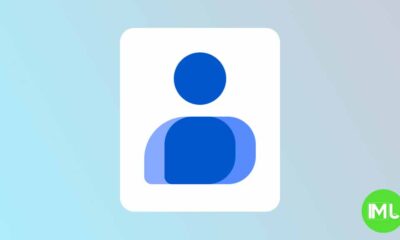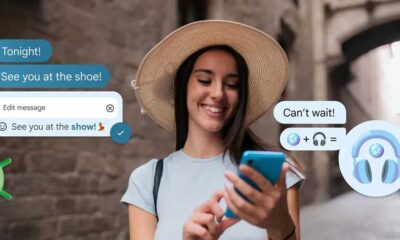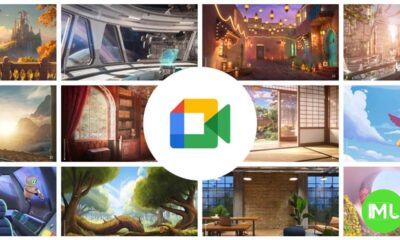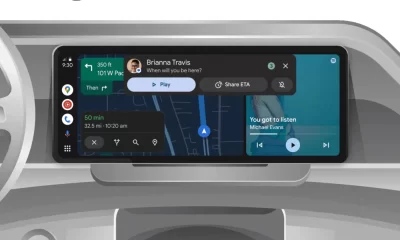Android
Google’s shift to Android TV 16 and the new Quick Share setup on Android 15: What You Need to Know

Google is making significant changes to Android TV and its file-sharing feature, Quick Share, bringing new improvements and requirements that could impact users across the Android ecosystem. Here’s a breakdown of what’s happening and why it matters.
Why Android TV Might Skip Android 15 and Go Directly to 16
Unlike smartphones and tablets, Android TV is primarily a media consumption platform. Google has traditionally updated Android TV to stay aligned with Android’s core development cycle, but TV manufacturers struggle to keep up. Unlike handheld devices, people tend to replace TVs every 5-10 years, based on hardware features, rather than frequent software updates. This less frequent update cycle has led Google to a bi-yearly release schedule for Android TV updates, with the next major version potentially skipping Android 15 to focus on Android 16.
During a recent Android TV partner conference, Google reportedly announced this new release strategy. This isn’t entirely new territory for Google, as they skipped Android TV 13 and jumped straight to Android TV 14. The current version, Android TV 14, is based on the Android 14 codebase. Now, with a likely two-year gap, Android TV’s next big update might launch as Android TV 16 in 2026, aligning with the release of Android 16 for smartphones and tablets.
This shift could streamline development and give TV manufacturers more time to implement updates, although some may wonder if Google might surprise users by going directly to Android TV 17 in 2026. Google has also been testing system-level APIs for Android TV 16, suggesting a focus on Android 16 as the foundation for future Android TV developments.
Features to Expect in Android TV 16 (Or 17)
Currently, it’s unclear what new features might appear in Android TV 16. Most Android TV apps are not part of the Android Open Source Project (AOSP), making it challenging to track changes through source code. Google usually unveils new features through developer previews, so any upcoming innovations will likely be shared closer to the release date.
Google’s New Approach with Quick Share in Android 15
In addition to Android TV updates, Google is refining its Quick Share feature for Android devices, aiming to make it more accessible and widely used. Quick Share, originally known as Nearby Share, is Google’s built-in file-sharing solution, designed to be a fast, seamless way to transfer files between Android devices, Chromebooks, and even some Windows PCs.
Since its release in 2020, Quick Share has been available on most Android devices running Android 6.0 or higher with Google Play Services. However, many users are still unaware of its existence. To increase visibility, Google is making Quick Share part of the Android 15 setup process. When setting up a new Android 15 device, users will see a Quick Share configuration page within the setup wizard, making it easier to enable and customize.
Google has mandated that all Android devices launching with Android 15 or later must include this setup screen for Quick Share. Users will be prompted to set their device’s visibility and sharing preferences right from the start, helping them understand Quick Share’s capabilities immediately. This visibility setting allows users to control who can send files to them, enhancing privacy and user control.
OEM Requirements and Custom Solutions
Google’s mandate includes an exception for manufacturers that have their own custom Quick Share implementations using Google’s Nearby SDK. For instance, Samsung has its own version of Quick Share integrated with Google’s Nearby SDK, so Galaxy devices are not required to use Google’s setup page. Nevertheless, it wouldn’t be surprising if Samsung adds a similar setup page to improve the user experience and encourage more people to use the feature.
Why These Changes Matter
The shift to Android TV 16 reflects Google’s strategy to keep Android TV updated without overwhelming manufacturers. This biyearly schedule could result in more stable, feature-rich Android TV versions with greater adoption among TV makers.
Meanwhile, Quick Share’s integration into the setup process aims to boost adoption of Google’s file-sharing feature, making it as recognizable on Android devices as Apple’s AirDrop is on iOS. By making Quick Share more accessible, Google is addressing a key usability issue, potentially improving the overall Android experience for millions of users.
Conclusion
Google’s evolving strategy for Android TV and the Quick Share feature shows the company’s focus on long-term improvement and user accessibility. Android TV’s two-year release cycle could bring more innovation to the living room while allowing TV manufacturers to better keep up with updates. At the same time, Quick Share’s integration into Android’s setup wizard ensures that more users know about and can benefit from Android’s convenient file-sharing tool. As these changes roll out, they’ll likely enhance the functionality and usability of both Android TVs and mobile devices in the coming years.
Android
Easy ways to change Android Auto’s look with light and dark themes

Android Auto is a helpful tool that lets you use your phone’s apps safely while driving. It connects your phone to your car’s screen, making it easier to use maps, music, and calls. One of the features many people like is the ability to change how Android Auto looks by switching between light and dark themes.
How to switch between light and dark themes
Android Auto offers two main themes: light and dark. The light theme uses brighter colors, which can make the screen easier to see during the day. The dark theme uses darker colors, which can be more comfortable for your eyes at night or in low light.
To change the theme, follow these steps:
- Open the Android Auto app on your phone.
- Go to the settings menu.
- Find the “Theme” option.
- Choose between “Light,” “Dark,” or “Set by car” (this lets your car decide the theme based on the time of day or your car’s settings).
Why themes matter
Using the right theme can make driving safer and more comfortable. The light theme is good for bright days, while the dark theme helps reduce glare at night. Having these options means you can pick what works best for you, making Android Auto easier to use in any condition.
In short, Android Auto’s theme options are simple to use and help you drive more safely by making the screen easy to see, no matter the time of day.
Android
Google’s New Updates: Gemini 2.5 Pro, Android 16 features, and Messages change

Google has just rolled out some exciting updates across its services and apps. Here’s a simple breakdown of what’s new and what it means for you.
Gemini 2.5 Pro is here
Google has launched Gemini 2.5 Pro, the latest version of its AI model. This upgrade brings smarter and faster responses, making it easier for users to get helpful answers. Gemini 2.5 Pro is now available in Google’s AI Studio and Vertex AI, so developers can build even better tools and apps using this technology.
Android 16 brings more customization
Android 16 is adding new ways to personalize your phone. One of the standout features is the ability to hide the clock on your lock screen, giving you a cleaner look if you want it. This is part of Google’s push to let users make their phones feel more unique. There’s also a new animation for the power button, making the experience smoother and more modern when you turn your phone on or off.
Google Messages removes the unsubscribe button
If you use Google Messages, you might notice that the “Unsubscribe” button is gone from some business messages. Google has removed this feature, so users now have to find other ways to stop unwanted texts. This change might make it a bit harder to manage spam, but Google hasn’t said why the option was removed.
What does this mean for you
These updates show that Google is focused on making its products smarter and more personal. Whether you’re using AI tools, customizing your phone, or managing your messages, you’ll see some changes that aim to improve your experience.
Android
Here’s what’s new with Google Keep and Android Automotive apps

Google Keep is getting a fresh look with the new Material You design, making it more colorful and easier to use on Wear OS smartwatches. The update brings bigger buttons and clearer text, so you can quickly jot down notes or check your lists right from your wrist. This makes Google Keep more handy when you’re on the go and don’t want to pull out your phone.
On another front, Android Automotive is improving how apps show information while you drive. Instead of opening full apps, you’ll see simple cards on your car’s screen that give you important details at a glance.
These cards help keep your focus on the road by showing things like music controls, navigation updates, or reminders without distractions. This new card system is designed to work smoothly with apps like media players and navigation tools, making your driving experience safer and more convenient.
Together, these updates show Google’s effort to make its apps smarter and easier to use in everyday life, whether you’re walking around with your smartwatch or driving your car. The focus is on clear, simple designs that help you get things done quickly without hassle.
In short, Google Keep’s new look on Wear OS and the smart cards in Android Automotive are small but useful changes that make tech fit better into your daily routine.
-

 Apps1 year ago
Apps1 year agoGboard Proofread feature will support selected text
-

 News1 year ago
News1 year agoSamsung USA crafting One UI 6.1.1
-

 Apps12 months ago
Apps12 months agoGoogle Contacts app testing new Besties Widget
-

 AI12 months ago
AI12 months agoGoogle Pixel 9 Pro may come with a complimentary one-year Gemini Advanced subscription
-

 News1 year ago
News1 year agoBreaking: Samsung Galaxy S22 may get Galaxy AI features
-

 Apps12 months ago
Apps12 months agoGoogle working on a new video editing feature for its Photo app
-

 Apps12 months ago
Apps12 months agoGoogle Maps lets you report traffic jams and accidents on Apple CarPlay, but not on Android Auto
-

 Apps12 months ago
Apps12 months agoGoogle Messages app will transform MMS chats into RCS










